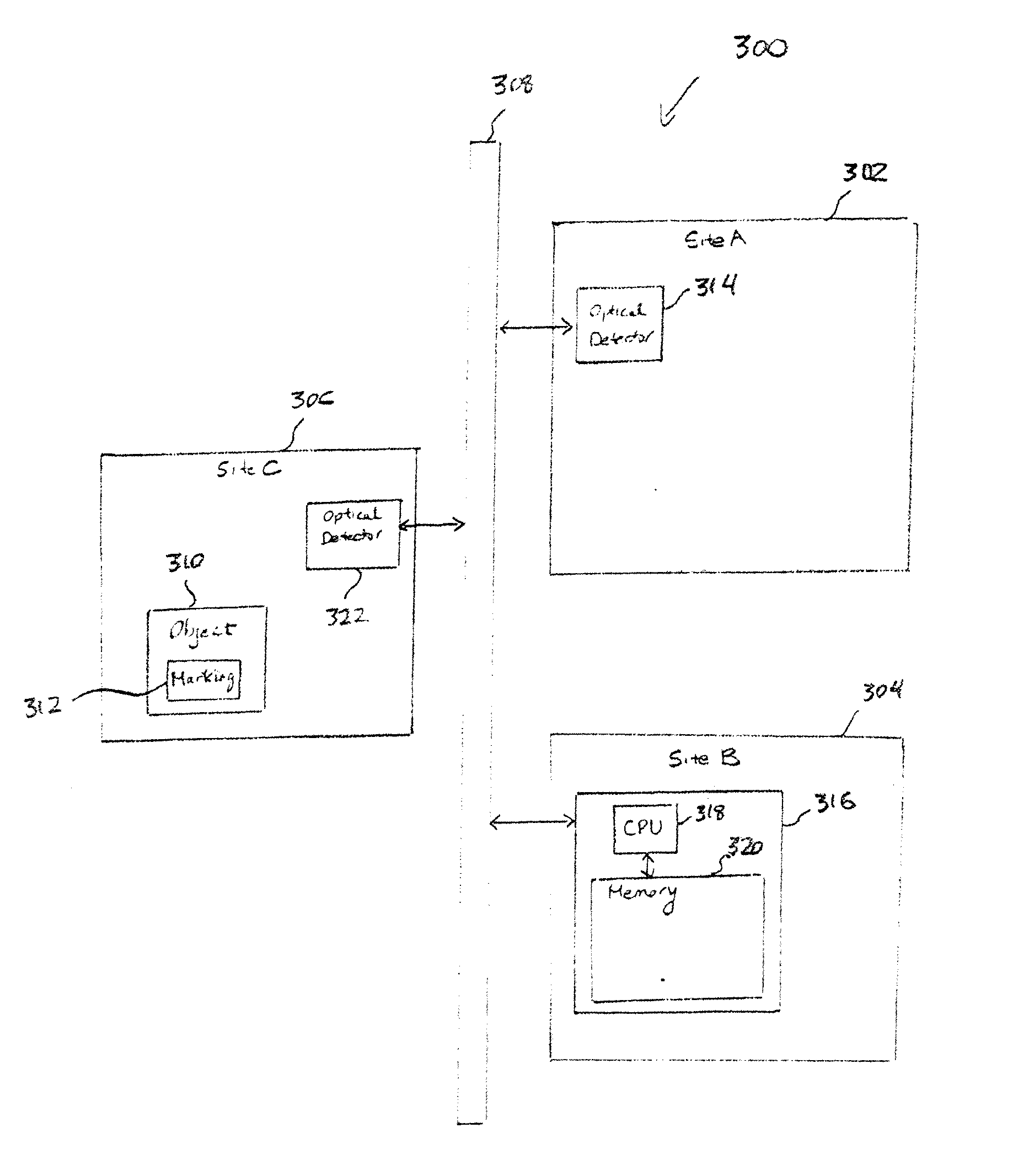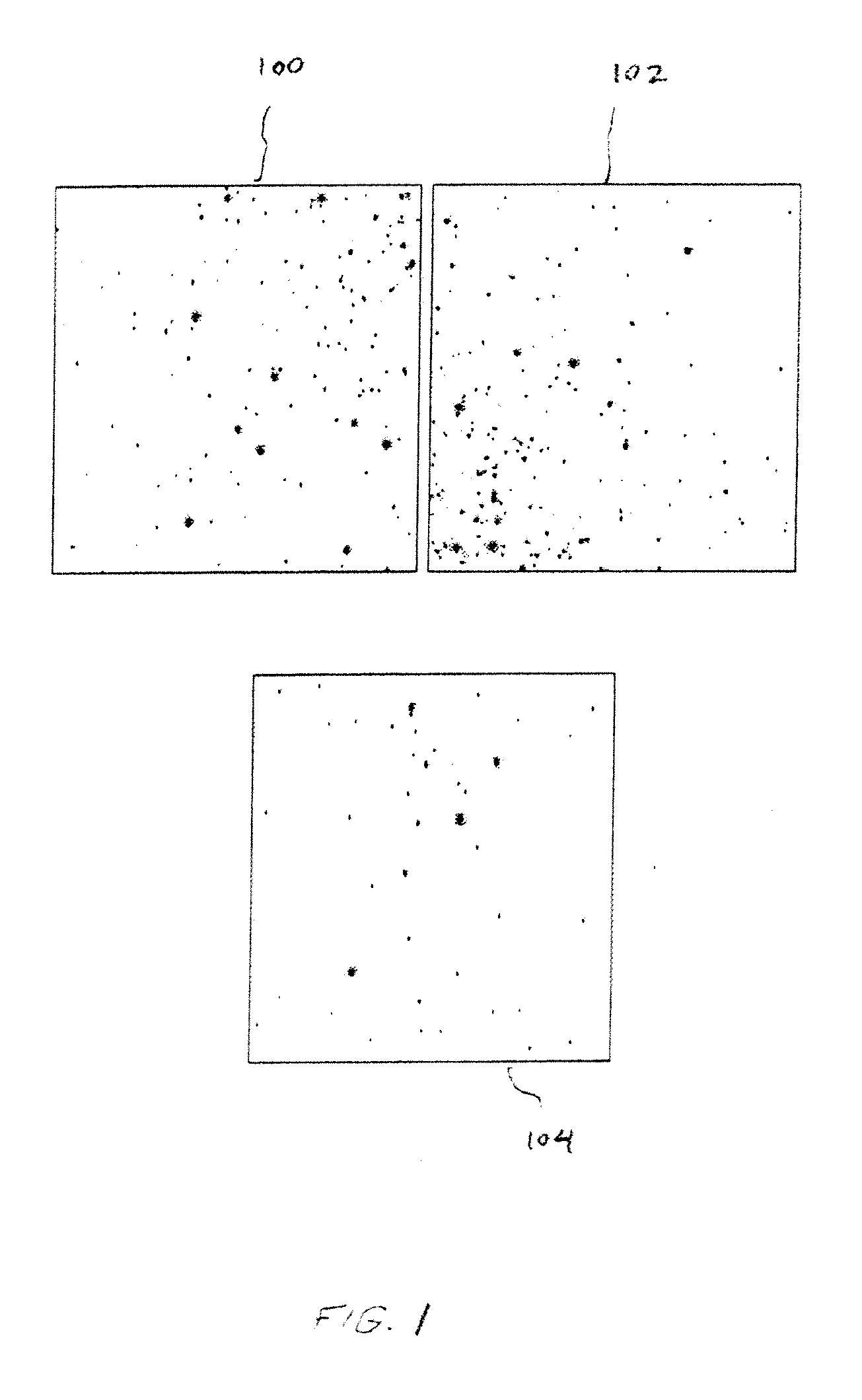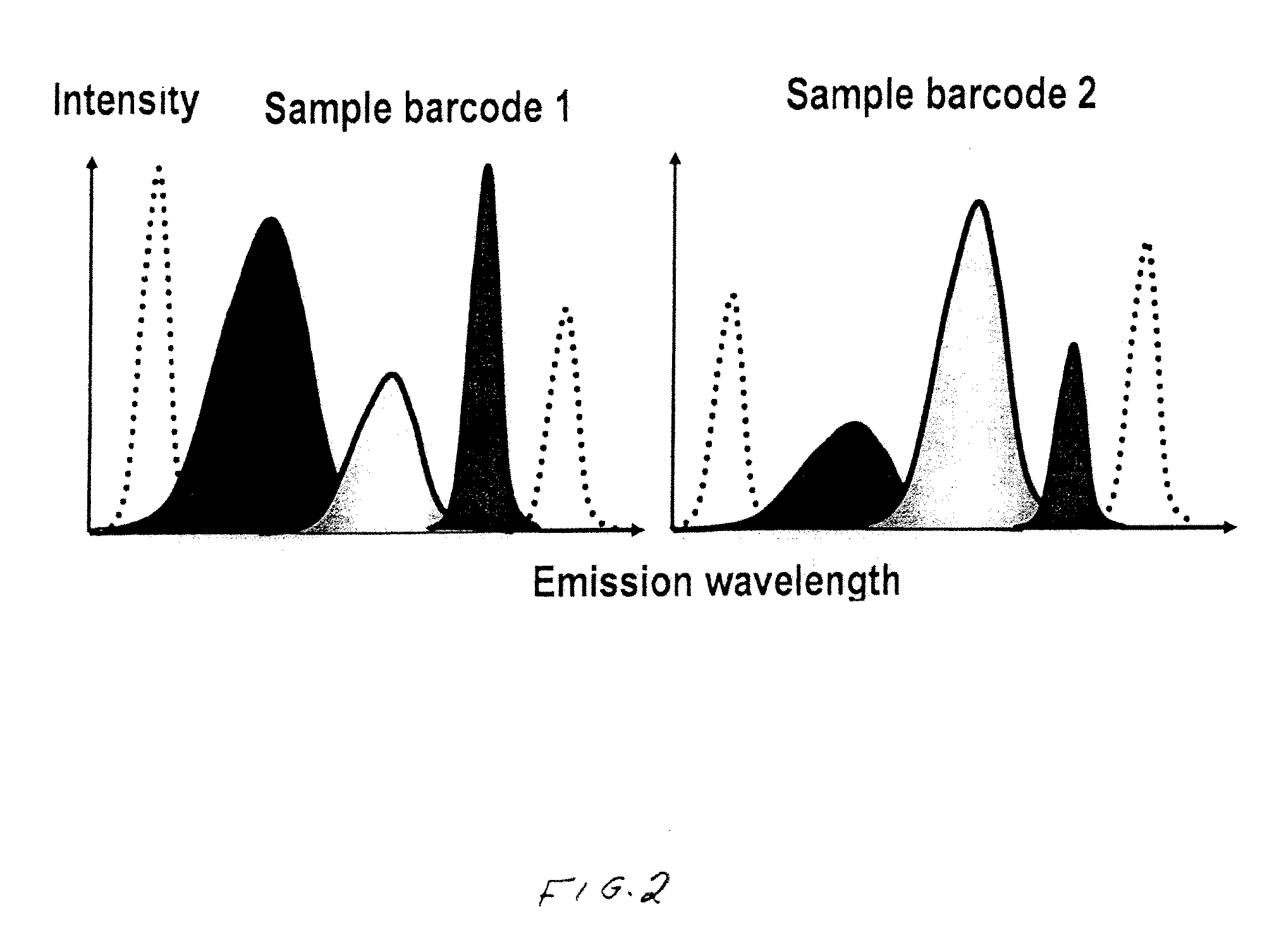Luminescent materials that emit light in the visible range or the near infrared range
a technology of luminescent materials and visible ranges, applied in the field of luminescent materials, can solve the problems of limited effectiveness in preventing counterfeiting, and achieve the effects of high quantum efficiency, narrow spectral width, and convenient processing
- Summary
- Abstract
- Description
- Claims
- Application Information
AI Technical Summary
Benefits of technology
Problems solved by technology
Method used
Image
Examples
example 1
Formation of Luminescent Material
[0095] Anhydrous SnCl2 (or SnCl2.H2O) was mixed with CsI in a powdered form and then pressed with a standard pellet press (5 cm diameter, 5 mm thickness, 8 tons pressure). The ratio of SnCl2 (or SnCl2.H2O) to CsI was in the range of 0.1 percent to 99.5 percent by weight. The resulting material (in either a pellet form or a powdered form) was then tested for photoluminescence.
example 2
Formation of Luminescent Material
[0096] SnBr2 (or SnI2) was mixed with CsI in a powdered form. The ratio of SnBr2 (or SnI2) to CsI was in the range of 10 percent to 90 percent by weight. The resulting material in a powdered form was then tested for photoluminescence in the near infrared range.
example 3
Formation of Luminescent Material
[0097] Sn2P2O7 was mixed with CsI in a powdered form and then pressed with a standard pellet press (5 cm diameter, 5 mm thickness, 8 tons pressure). The ratio of Sn2P2O7 to CsI was in the range of 0.1 percent to 99.5 percent by weight. The resulting material (in either a pellet form or a powdered form) was then tested for photoluminescence.
PUM
| Property | Measurement | Unit |
|---|---|---|
| quantum efficiency | aaaaa | aaaaa |
| Full Width at Half Maximum | aaaaa | aaaaa |
| quantum efficiency | aaaaa | aaaaa |
Abstract
Description
Claims
Application Information
 Login to View More
Login to View More - R&D
- Intellectual Property
- Life Sciences
- Materials
- Tech Scout
- Unparalleled Data Quality
- Higher Quality Content
- 60% Fewer Hallucinations
Browse by: Latest US Patents, China's latest patents, Technical Efficacy Thesaurus, Application Domain, Technology Topic, Popular Technical Reports.
© 2025 PatSnap. All rights reserved.Legal|Privacy policy|Modern Slavery Act Transparency Statement|Sitemap|About US| Contact US: help@patsnap.com



